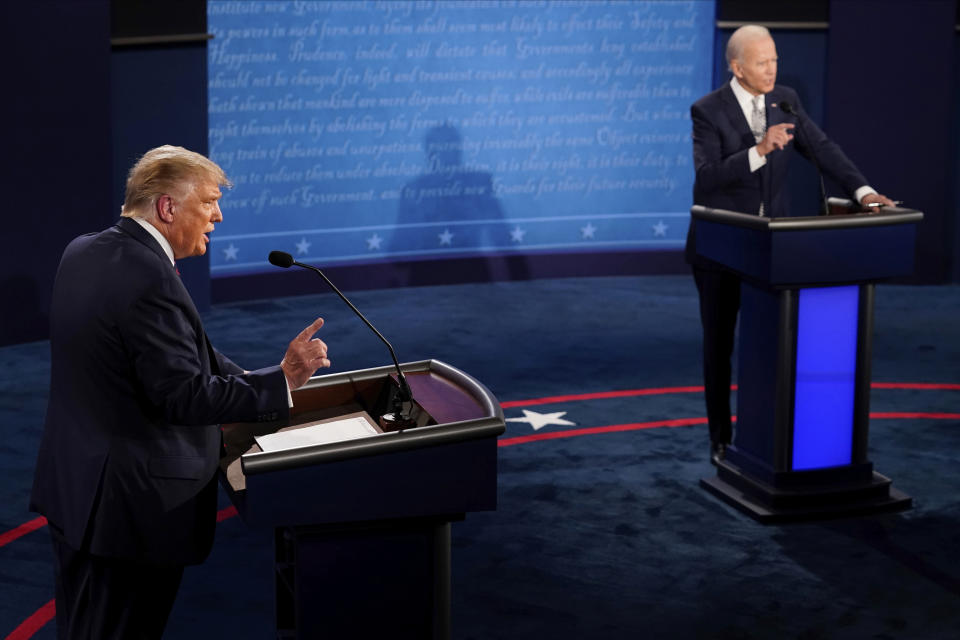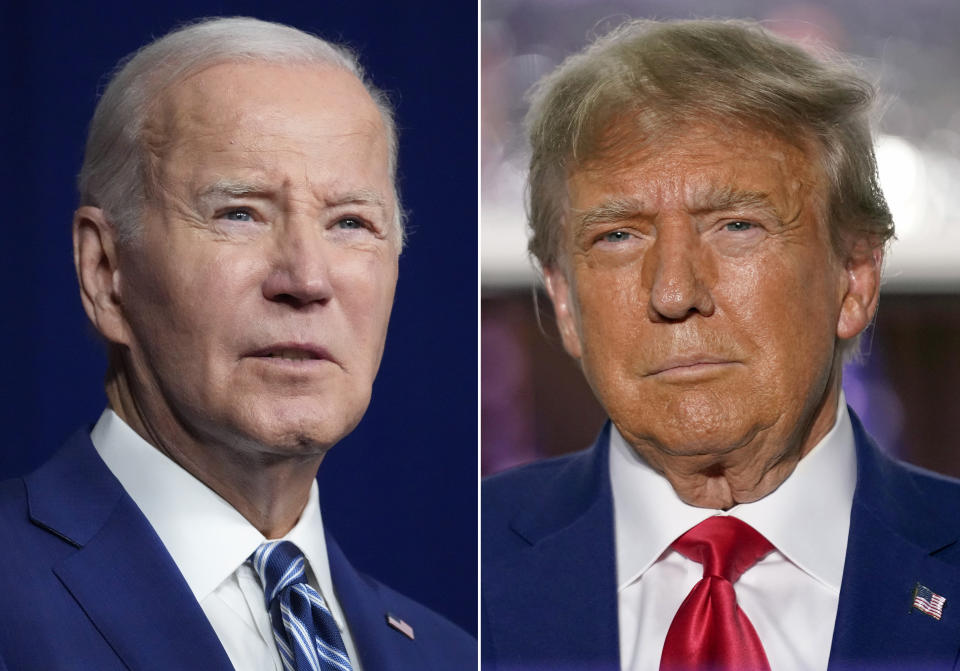US has its first presidential rematch since 1956, and other facts about the Biden-Trump sequel
- Oops!Something went wrong.Please try again later.
- Oops!Something went wrong.Please try again later.
- Oops!Something went wrong.Please try again later.
- Oops!Something went wrong.Please try again later.
- Oops!Something went wrong.Please try again later.
- Oops!Something went wrong.Please try again later.
- Oops!Something went wrong.Please try again later.
WASHINGTON (AP) — Just when Americans thought they were out, Joe Biden and Donald Trump pulled them back in.
The sequel to the 2020 election is officially set as the president and his immediate predecessor secured their parties' nominations. Biden and Trump have set up a political movie the country has seen before — even if the last version was in black and white.
The last presidential rematch came in 1956, when Republican President Dwight D. Eisenhower again defeated Adlai Stevenson, the Democratic opponent he had four years prior.
Grover Cleveland, meanwhile, was the nation's 22nd and 24th president, winning elections in 1884 and 1892.
As sequels go, fans of politics and film may hope the Biden-Trump rematch ends up like the acclaimed “The Godfather II” rather than the often-derided “The Godfather III.” But the Biden-Trump rematch is expected to take its place alongside historical analogues that date back to the nation's founding.
Here's how it stacks up in history:
When was the last rematch of a presidential race?
Sixty-eight years ago. After Eisenhower beat Stevenson in 1952 and won all but nine states, the incumbent president faced Stevenson again four years later and secured an even larger landslide.
There are other examples of presidential race rematches, but they occurred far earlier in U.S. history.
Republican President William McKinley topped Democrat William Jennings Bryan in the election of 1896 and then again in 1900. In 1836, Democrat Martin Van Buren defeated William Henry Harrison of the Whig Party, only to have Harrison win a rematch between the two and take the presidency four years later.
John Quincy Adams and Andrew Jackson faced off twice for the presidency. The first time was in 1824, when Adams prevailed, and the second was in 1828, when Jackson became president by beating the incumbent Adams.
Then there was John Adams, a Federalist who was the nation's second president, and Thomas Jefferson, its third and a Democratic-Republican. Both vied for the presidency during the first-ever contested presidential election to succeed George Washington in 1796, with Adams winning and Jefferson elected vice president. Four years later, Jefferson ran against and beat the incumbent Adams.
How many ex-presidents have returned to the White House?
So far, just one.
Grover Cleveland is the lone president in U.S. history to serve two non-consecutive terms. He successfully pulled off what Trump is now attempting — winning back the White House from the opponent who took it from him.
A Democratic anti-corruption crusader and governor of New York, Cleveland narrowly won the presidential election of 1884. Four years later, he again won the popular vote, but was defeated in the electoral college by Republican Benjamin Harrison. Cleveland again ran against Harrison in 1892, this time easily winning a second term.
Other former presidents have tried and failed to win back their former post.
After serving two terms until 1877, Ulysses S. Grant sought the Republican nomination again during the 1880 election but lost after a convention fight to James A. Garfield. A third term would have been allowed then because the 22nd Amendment, which limited presidents to two terms in office, wasn't ratified until 1951.
What about ex-presidents and third party bids?
Three former presidents tried unsuccessfully to reclaim the White House with parties different from those they were part of when they won it — with Teddy Roosevelt getting closest.
Roosevelt, a Republican, became president when William McKinley was assassinated in 1901 and was reelected in 1904 — but opted not to seek another full term in 1908, stepping aside for his handpicked GOP successor, William H. Taft.
Roosevelt later became disenchanted with Taft and challenged him for the Republican nomination in 1912. When that failed, Roosevelt ran for president on his own Progressive ticket, which became known as the Bull Moose Party after the former president joked that he felt “as strong as a bull moose." Democrat Woodrow Wilson won that November's election, but Roosevelt came in second, winning 88 electoral votes compared to just 8 for Taft, the incumbent.
Millard Fillmore became president after Zachary Taylor, who was the last president elected with the Whig Party, died in 1850. Fillmore unsuccessfully sought the Whig presidential nomination in 1852. Four years later, he ran for president with the Know-Nothing Party but lost every state except Maryland.
Democrat Martin Van Buren was president from 1837 to 1841 and lost his reelection bid to Whig Party nominee William Henry Harrison. Eight years later, Van Buren attempted a comeback with the Free Soil Party but failed to garner any electoral votes.


